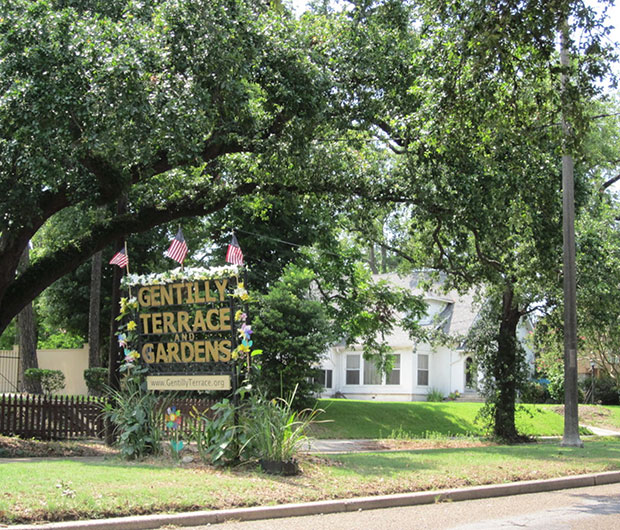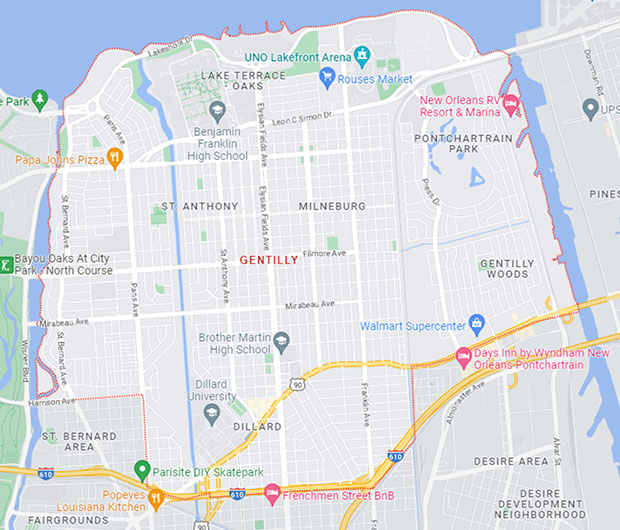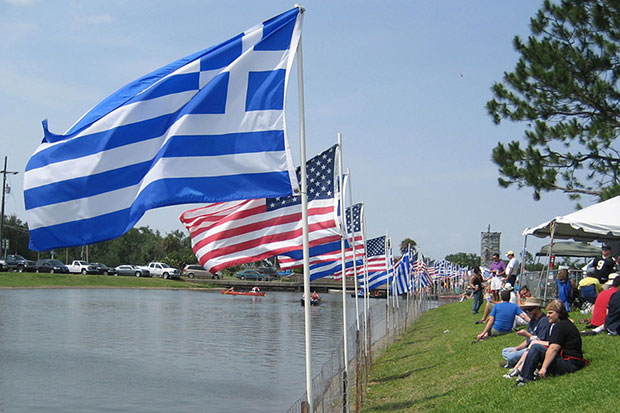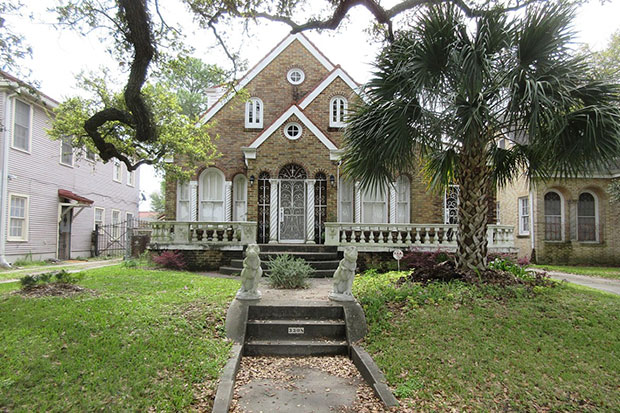Gentilly Neighborhood Guide
The quintessential middle-class residential neighborhood, Gentilly offers 20th century architecture and tree-lined streets with spacious backyards.
Gentilly is one of the least foot-trafficked areas of New Orleans, with decidedly fewer landmarks and dining destinations than the more touristy areas. What it lacks in centuries-old architecture, Gentilly makes up in a family-friendly, community-oriented vibe and lots of green space. This traditionally middle-class, racially mixed neighborhood is a great place to raise a family, especially if you want to live somewhere quiet, have a big yard, and not worry about parking.
Read on to learn more about this neighborhood’s residents, notable features, hotspots, and history.


Where Is Gentilly?
The boundaries of Gentilly, as defined by the City Planning Commission, are:
North: Lake Pontchartrain
East: France Road
West: Bayou St. John
South: Louisville and Nashville Railroad.

Homes for Sale in Gentilly, New Orleans
Why Buy a Home in Gentilly?
While Gentilly doesn’t have the wrought iron splendor of the French Quarter or the stately mansions of the Garden District, it’s still an architecturally interesting neighborhood, full of 20th-century Spanish Revival bungalows and ranch houses with spacious lawns and plenty of parking. It’s also the least visited area by tourists, and therefore quieter, where neighbors greet you by name and young families choose to buy starter houses to raise kids. Below are many things to love about Gentilly.
Convenient Access to Other Areas and Main Thoroughfares. Interstates 10 and 610 are within easy reach, and Mid-City, Lakeview, and Bayou St. John are but a few minutes away by car. The French Quarter is about three miles away.
Gentilly
Attractions
Take a drive up Gentilly Boulevard, Elysian Fields, or St. Bernard Avenue to take in the neighborhood, or, better yet, bike along the picturesque Wisner Avenue (which will lead you to City Park). Gentilly Boulevard in particular rivals Esplanade Avenue, and even St. Charles Avenue, when it comes to stunning architecture, with rows of live oak trees serving as a backdrop.
Tour the Old New Orleans Rum Distillery. See how the local small-batch rum is produced. The tour is a bargain at $10, since you’ll be provided many samples.


Want lunch made from scratch? The casual, counter-service FUD BAR in the Gentilly/Lake Terrace neighborhood offers a fresh, seasonal menu with quite a few gluten-free items, cafeteria-style.
Party with Krewe of Dreux on the Saturday before Mardi Gras in the little park dubbed the “People’s Park” (Filmore and People’s Avenue). The smallish parade rolls around the neighborhood after gathering first in the park for an informal block party.

History of Gentilly, New Orleans
The construction of a floodwall at the lakefront and the existence of the railroad line connecting the developed areas along the shores of Lake Pontchartrain and the lower end of Elysian Fields Avenue also brought homeowners to Gentilly in the beginning of the 20th century. The first part of Gentilly to be developed was a stretch of high ground along the former banks of Bayou Gentilly, called Gentilly Ridge. Gentilly Terrace, the land adjacent to the natural ridge, was developed by creating blocks of terraced land (hence its name). It was the result of excavating the swamp in the area.
Gentilly experienced a post-World War II boom in housing and became the racially diverse, middle-class residential neighborhoods it’s known as today. It was badly damaged, however, following Hurricane Katrina. While the population numbers aren’t quite back to their pre-Katrina levels, many of its businesses and residents have returned. Gentilly is undergoing a slow yet steady recovery, experiencing a residential and commercial comeback.
